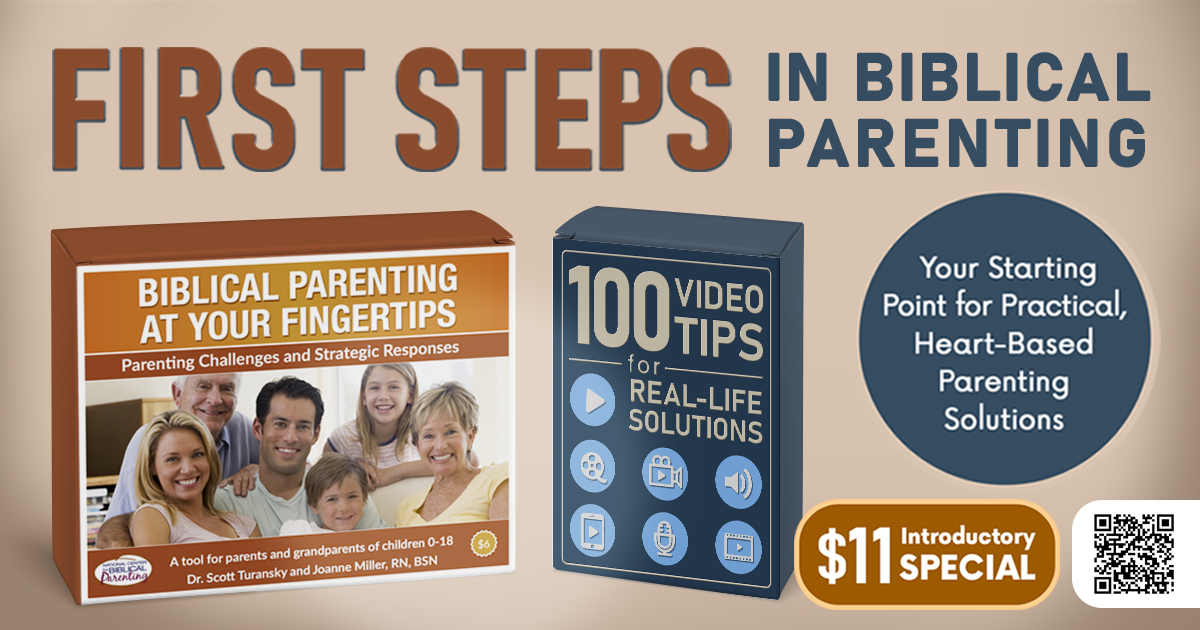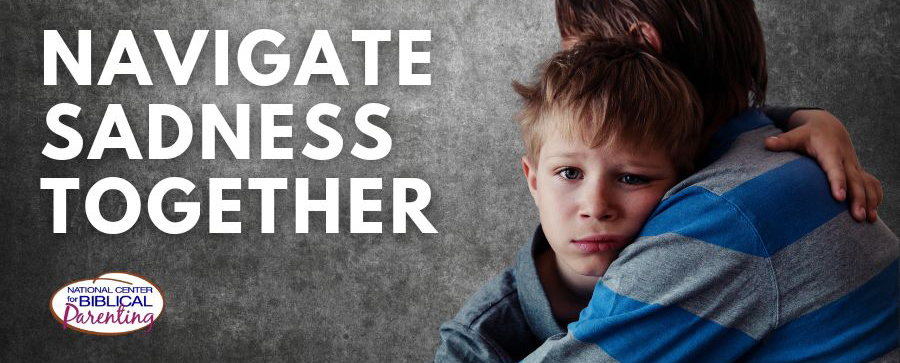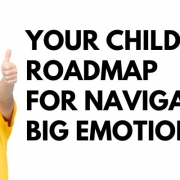Navigating Big Emotions: Sadness

The Alvarez family faced a familiar scene at their home one evening. Eight-year-old Daniela was sitting on the couch, her eyes brimming with tears and her voice loudly wailing as she was filled with sadness over yet another seemingly small thing. This was not an uncommon sight; Daniela often found herself overwhelmed by these feelings. Her go-to response seemed to be tears. Her parents, and even her siblings, were growing tired of it and felt like she just needed to grow up and get over it. It seemed like nothing Daniela’s parents did helped.
God’s Purpose for Sad Emotions
Sadness, like all emotions, is a God-given emotion. Sadness is not in itself bad, nor is it a sin to feel sad or depressed. Sadness’s purpose, like all emotions, is to serve as a signal to our hearts. The signal that sadness sends to the heart is that things are not going well or as planned or expected.
Sadness comes in many sizes including feeling sad, tired, lonely, bored, or disappointed, and in more intense cases, feelings of guilt or depression. All of these emotions tend to cause the heart to hurt and the person feeling them to slow down.
God’s Word offers profound wisdom for dealing with sadness. Verses such as Psalm 27:13-14, Jeremiah 29:11, and Romans 8:28 remind us of God’s love, plans, and promises. The goal for children is not to stop feeling sad but rather to acknowledge the loss they are feeling and ask God to bring comfort and His perspective.
Finding Heart Solutions
Understanding and addressing big emotions like sadness is crucial for children’s emotional development and spiritual growth. Children who struggle with sadness have often invested too much emotionally in a specific object, toy, event, or thing. Depending on the type of sad emotion, they often need either some empathy from parents and/or to work on gratefulness to develop joy. Fortunately, God provides families with seven heart tools to foster lasting change at the heart level that can be applied to addressing sadness.
- Relationship: One of the most powerful tools parents have is the strength of their relationship with their child. When a child feels sad, parents should empathize with and acknowledge their emotions to reduce the pressure on their heart. Empathy and closeness can significantly alleviate sadness, making children feel understood and supported.
- Visioning: Parents can help children gain perspective on their emotions by showing them the bigger picture of God’s work in their lives. Teaching emotional honesty and gratitude helps children focus on positive aspects. This perspective shift allows children to see beyond their immediate feelings and understand God’s greater plan for their challenges.
- Firmness: While empathy is crucial, firmness is sometimes necessary if a child is stuck in a cycle of sadness. Providing space for emotions and gently guiding them towards solutions is essential. Allowing breaks and offering support helps, but it is important not to let children remain in prolonged sadness.
- Prayer: Prayer is a powerful tool for addressing sadness. Parents should make it a practice to pray with their children, asking for God’s help in teaching them contentment and gratitude. Using memory verses such as Psalm 55:22 can remind children of God’s promises and His presence in their lives can be a source of comfort and strength.
- Teaching: Creating a list of joy-filled activities can help shift a child’s focus from sadness to joy. Brainstorming hobbies and ways to serve others can divert attention from sadness. Practicing correct thinking by encouraging children to focus on gratitude and finding ways to honor others in the family can foster a spirit of joy and service.
- Coaching: Coaching involves helping children acknowledge their sadness and then decide how to move forward to develop resilience and a proactive approach to emotions. Providing positive feedback when they respond correctly and gently redirecting them when needed helps reinforce healthy emotional habits.
- Transferring Responsibility: Empowering children to take responsibility for their emotional well-being is essential. Involving children in developing a plan can give them a sense of control. Encouraging activities that bring joy when they feel bored, tired, or lonely, as well as service opportunities support continued growth.
Solutions that Bring Heart Change that Lasts
After applying many of these heart tools consistently, Daniela and her family began to notice a remarkable change. Daniela still experiences sadness, but she no longer feels overwhelmed by it. She has learned to identify her emotions early on, understand what they are signaling, and make a plan for moving forward. Daniela’s emotional resilience has grown, and her faith has deepened.
For parents facing similar challenges, there is hope and help available. Download your free copy of “Your Child’s Roadmap for Navigating BIG Emotions” parenting resource filled with printable posters and practical, heart-based tools and strategies. This resource will empower you and your child to navigate big emotions effectively, fostering greater peace in your family life.
B.J. Meurer has worked with families for over 25 years as an elementary educator, biblical parenting coach/presenter, and digital course creator. He has coached families with children of all ages and stages facing a wide variety of emotional, mental, and biological challenges and helped them discover and personalize the practical heart-based tools and strategies that bring about positive change in their families. You can find many more of B.J.’s parenting resources and videos at JesusHelpMeParent.com and the Jesus, Help Me Parent YouTube channel. B.J. coaches through The National Center for Biblical Parenting and lives in Pennsylvania with his wife Rachel and their 8 children. He and his family enjoy camping, reading books, storytelling, and going on homeschooling adventures together.
Dr. Turansky has created a low-cost, high-value product to introduce you to Biblical Parenting. 100 four-minute videos and a Biblical Parenting Cheat Sheet for just $11. Learn more here.











Leave a Reply
Want to join the discussion?Feel free to contribute!